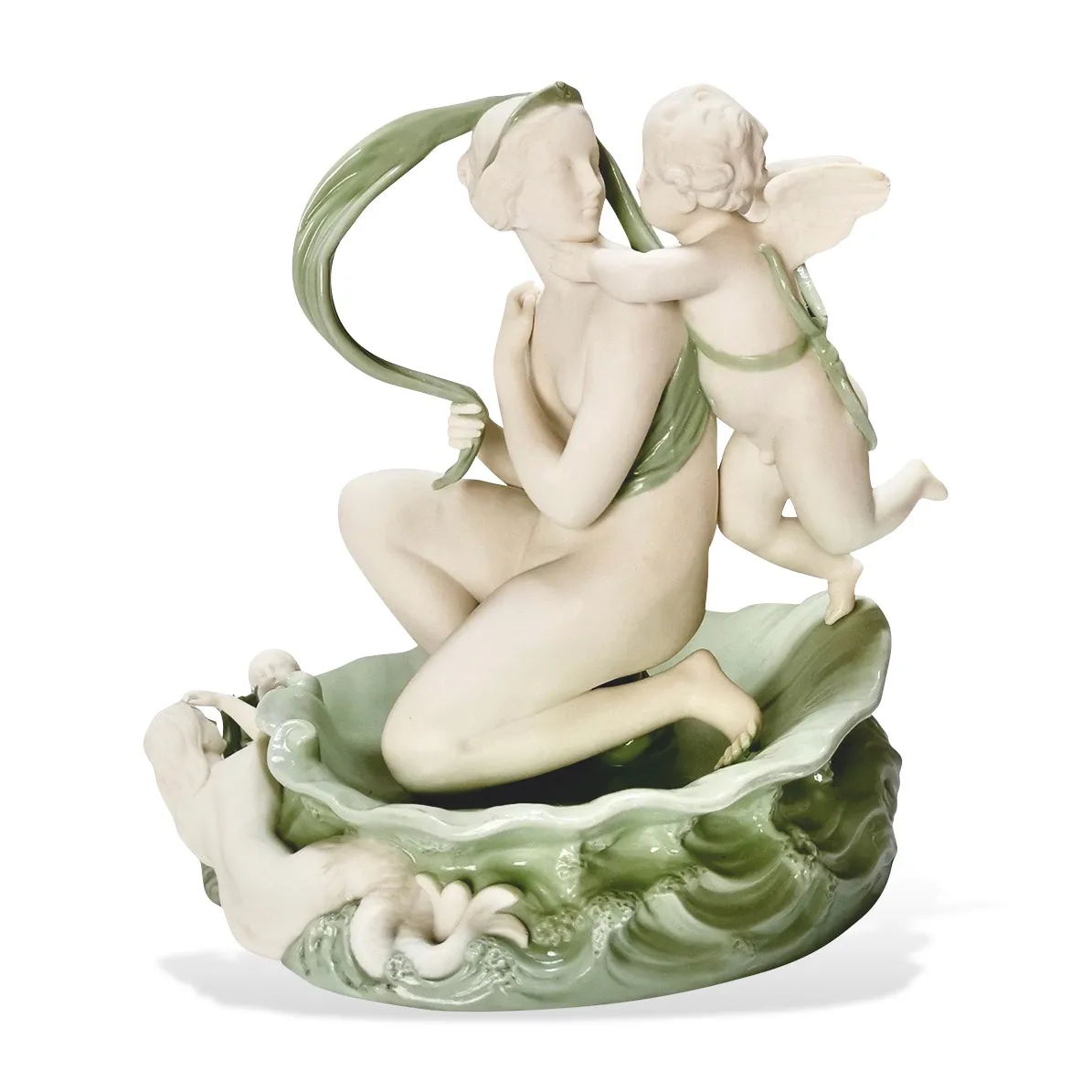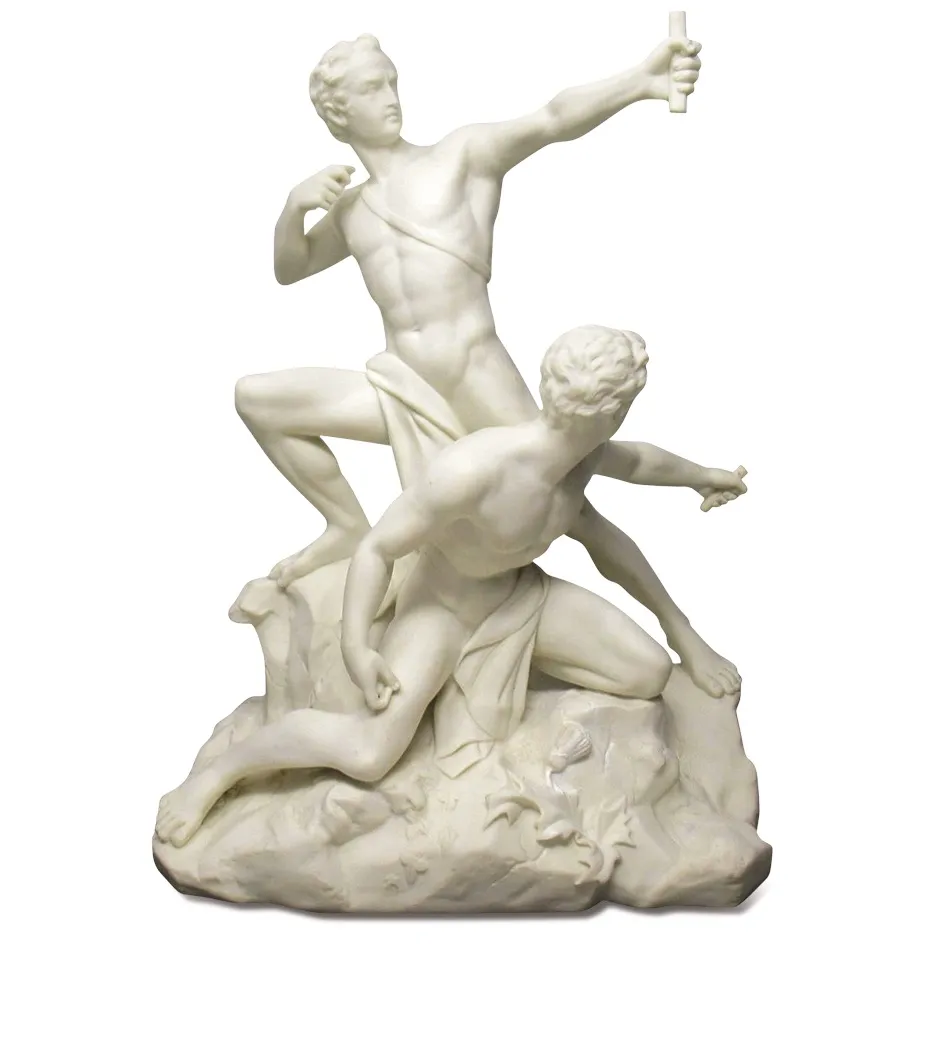Sculpture was seen as the most important art of the Victorian age – there was sculpture on buildings, sculpture in parks, sculpture everywhere, and Parian brought public sculpture to private interiors,’ says expert Paul Atterbury, explaining why Parian – a new ceramic material developed in the 1840s to make multiple small casts of well-known sculptures – became such a huge hit.
Despite its popularity, no one knows who invented Parian. Was it Minton or Copeland, or was it a now forgotten company called T & R Boote? ‘Even if you go back to the magazines of the 1850s no one agreed,’ says Paul. The term ‘Parian’ was first coined by Minton, and refers to marble from the Greek island of Paros. Other factories called it by various names: ‘Statuary Porcelain’ at Copeland and ‘Carrara’ at Wedgwood, but Parian became the prevailing term within a few years.

A felspathic (containing feldspar – hard rock-forming minerals) hard-paste porcelain that is fired twice at high temperature, Parian has a hard, creamy white coloured body with a smooth, impenetrable surface. For both sculptors and buyers, the substance had huge appeal.‘Its main virtue was that, unlike Sèvres or Derby biscuit porcelain, the surface doesn’t absorb dirt. And because you don’t need to glaze it, all the details of modelling remain very sharp,’ says Paul.
The well-heeled Victorian public wanted sculpture in their homes, and for top 19th-century sculptors, such as John Bell and Carlo Marochetti, there were clear commercial incentives to the state-of-the-art substance. ‘It was to sculpture what the print is to painting,’ says Paul. ‘And all the Henry Moores of their day rushed to have their important works produced in Parian.
You might also like a history of Victorian garden cemeteries
They’d sell the reproduction rights to a manufacturer, and therefore every time a piece was sold, they prospered.’ Parian versions of famous sculptures were also widely promoted by Art Unions. These subscriber organisations held lotteries, in which winners were awarded works of art rather than cash.
Enormous public commissions could be accurately reduced in scale thanks to a further technical breakthrough: a device patented in 1844 called the Benjamin Cheverton Reducing Machine –a type of mechanical pantograph. At the 1851 Great Exhibition, fascinated crowds watched daily demonstrations of this machine.
They also flocked to see a colossal statue called The Greek Slave, by the American sculptor Hiram Powers. ‘It was an iconic figure and people wanted to take it home with them, so a number of companies quickly began producing small Parian versions, which sold in huge numbers.’
Look at photos of stylish homes from the 1860s to 1920s, and the chances are you’ll see elegant white Parian figures proudly displayed on tables and mantelpieces. ‘You could have all the range that bronze gives you: complex groups, equestrian figures, children, portrait busts of people in the news, historical figures, and scaled-down versions of antique sculptures,’ says Paul.

Parian was usually left white to imitate marble, but some was tinted through the body, some surface painted and some glazed. Most figures measure 20-30cm, although sizes can be larger. Parian shrinks by about 25 per cent during the firing process, ‘so it came down to a question of production cost and what people would pay’.
Such was the Victorian passion for Parian that, within a few decades, some 200 companies claimed to have produced it. One of the bestselling figures – John Bell’s Dorothea – was introduced in 1847 priced at 2 guineas, and still available to order in the early 1920s. Models often carried the name of the sculptor, title of the figure and the maker’s mark, but many later figures were left unmarked and are therefore impossible to attribute.
You might also like a history of British porcelain
A measure of Parian’s huge popularity came when the Duke of Wellington was near death. ‘Carlo Marochetti told Minton they could make millions if they produced his bust of the Duke in Parian, and demanded an eye-watering £10,000 for the reproduction rights. Minton refused to pay. But the fact he dared to ask for such a sum in the first place shows the expectations of big timers,’ says Paul.
Today’s prices for Parian figures reflect changing fashions and the general slip in demand for 19th-century works of art. This means an opportunity for keen-eyed buyers: a wonderful range of decorative figures are now half the price they would have been two or three decades ago. ‘Works by 19th-century sculptors are most desirable. Larger figures in good condition by a named maker might fetch over £500, although most fall within the £100–£300 range,’ says Paul.
‘Look for fine modelling, well-cast details and a smooth, marble-like finish, and check toes and fingers are intact. Parian is a tough material, but breaks are difficult to restore. Remember that nothing is unique in Parian, so if you see a figure you like that’s broken, there’s another one somewhere; you just have to find it.’
